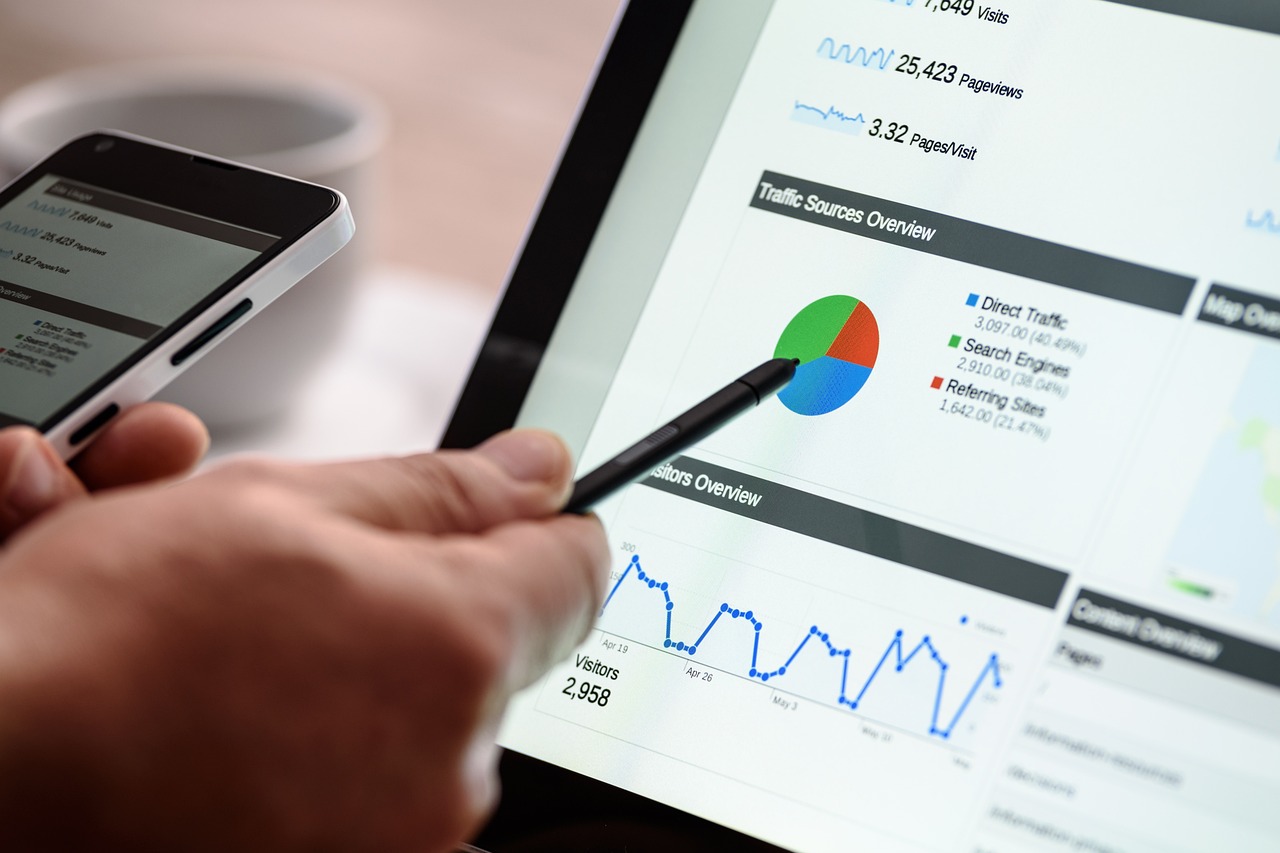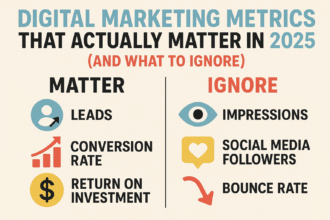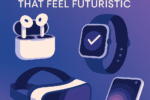Digital marketing in 2025 looks nothing like it did just five years ago. The pace of change—driven by technology, consumer expectations, and global shifts—has forced businesses to adapt rapidly or risk being left behind. Today, we stand at a pivotal moment where AI, personalization, and immersive experiences are no longer experimental tools but central pillars of successful digital strategies.
So, what exactly will shape the future of digital marketing in 2025? Let’s dive into the ten key trends that will define growth and transformation in the coming year.
1. AI-Powered Personalization at Scale
Artificial intelligence is no longer just a buzzword—it’s the backbone of digital marketing in 2025. From predictive analytics to real-time personalization, AI enables brands to deliver hyper-relevant experiences at every touchpoint.
- Smarter recommendations: Platforms like Amazon and Netflix pioneered personalization, but now AI-powered CRMs and ad platforms can anticipate user behavior with uncanny accuracy.
- Dynamic content creation: Marketers can generate personalized copy, product descriptions, and even video ads in seconds using AI-driven tools.
- Customer journeys mapped in real-time: Instead of static funnels, brands now rely on AI to adapt journeys dynamically, responding to user signals instantly.
According to a McKinsey report, personalization can drive a 10–15% revenue lift when implemented effectively.
2. Voice Search and Conversational AI
By 2025, over 60% of internet users are expected to rely on voice search daily. With smart assistants like Alexa, Siri, and Google Assistant becoming standard household tools, optimizing for voice is no longer optional.
- Long-tail keyword focus: Voice queries are conversational and longer than typed searches.
- Conversational AI chatbots: Brands increasingly use AI-driven chatbots to provide customer support, lead nurturing, and even sales in natural language.
- Audio-first marketing: Podcasts and branded voice experiences are growing into primary engagement channels.
Companies that fail to optimize for conversational queries risk losing significant search visibility.
3. Video Marketing Evolves into Immersive Storytelling
Short-form video dominates TikTok, Instagram Reels, and YouTube Shorts. But in 2025, video is evolving into a fully immersive storytelling tool.
- Shoppable videos: Platforms allow viewers to click and buy directly within the content.
- Interactive experiences: Viewers can choose story outcomes or explore products virtually.
- AR-powered try-ons: From fashion to furniture, augmented reality lets users “try before they buy.”
Cisco predicted video would account for 82% of all internet traffic by 2025—and we’re already seeing that play out.
4. The Rise of Social Commerce
Social platforms are no longer just places to build awareness; they’ve become full-fledged shopping ecosystems. In 2025:
- Seamless checkout: Instagram, TikTok, and Pinterest now allow one-click purchasing without leaving the app.
- Influencer-driven commerce: Nano- and micro-influencers are proving more effective than mega-celebrities due to higher trust and authenticity.
- Community commerce: Private groups and communities within platforms foster niche shopping experiences.
This shift redefines the sales funnel—making social media the first, middle, and last touchpoint.
5. First-Party Data Becomes the New Gold
With third-party cookies officially phased out in 2024, 2025 is the year of first-party data dominance.
- Zero-party data collection: Brands encourage users to share preferences directly via surveys, quizzes, and loyalty programs.
- Stronger consent frameworks: Transparency builds trust, and brands that respect user data earn long-term loyalty.
- Smarter segmentation: AI helps marketers analyze first-party data to create highly targeted campaigns.
As Google and Apple tighten privacy policies, businesses that fail to build robust first-party data strategies will struggle to compete.
6. Sustainable and Ethical Marketing
Consumers are increasingly choosing brands that reflect their values. In 2025, sustainability and ethical marketing are not just good PR—they’re a necessity.
- Eco-conscious campaigns: Brands highlight sustainability efforts, from packaging to supply chain transparency.
- Cause-driven storytelling: Companies align with social issues, but authenticity is key—greenwashing is easily spotted.
- Sustainable digital practices: Marketers optimize campaigns for energy efficiency, from reduced email spam to lighter web design.
A NielsenIQ study shows 78% of global consumers value sustainability when choosing products.
7. Web3 and Decentralized Marketing
The Web3 ecosystem is slowly but steadily integrating into mainstream marketing. In 2025:
- NFT loyalty programs: Brands offer exclusive rewards through tokenized memberships.
- Decentralized communities: Consumers join blockchain-powered platforms that prioritize transparency.
- Digital ownership: Virtual goods and collectibles create new revenue streams.
While still niche, Web3 adoption is expanding rapidly in gaming, fashion, and luxury sectors.
8. Hyper-Automation of Campaigns
Automation in 2025 goes far beyond scheduling posts. Hyper-automation combines AI, machine learning, and robotic process automation (RPA) to handle complex marketing workflows.
- Predictive campaign optimization: Algorithms test and adjust ads in real time.
- AI-driven content calendars: Automated tools suggest the best time and platform for posting.
- End-to-end funnel automation: From lead capture to conversion nurturing, campaigns practically run themselves.
This frees up marketers to focus on creativity, strategy, and innovation.
9. The Metaverse and Virtual Experiences
The hype around the metaverse has matured. By 2025, virtual worlds have become mainstream for both entertainment and commerce.
- Virtual storefronts: Retailers create immersive shopping environments.
- Brand activations in gaming: Fortnite, Roblox, and other platforms host branded experiences.
- Hybrid events: Conferences blend real-world networking with VR attendance.
Businesses that experiment early with metaverse marketing enjoy stronger engagement from younger demographics.
10. Human-Centric Storytelling in a Digital World
With all the technology available, one thing remains constant: people crave authentic, human connection. In 2025, digital marketing leaders focus on storytelling that resonates.
- Empathy-driven content: Messaging speaks to consumer struggles, values, and aspirations.
- Brand transparency: Behind-the-scenes stories foster trust.
- Community-first approaches: Brands build movements, not just audiences.
Amid AI and automation, authenticity becomes the true differentiator.
Final Thoughts: Navigating Digital Marketing in 2025
The future of digital marketing in 2025 isn’t about chasing every new trend—it’s about integrating innovation with authenticity. Businesses that succeed will be those who leverage AI and automation while staying rooted in human-centric values.
Marketers must rethink strategies around data privacy, sustainability, immersive experiences, and personalization. The winners in 2025 will be brands that not only adapt to change but also shape it.








